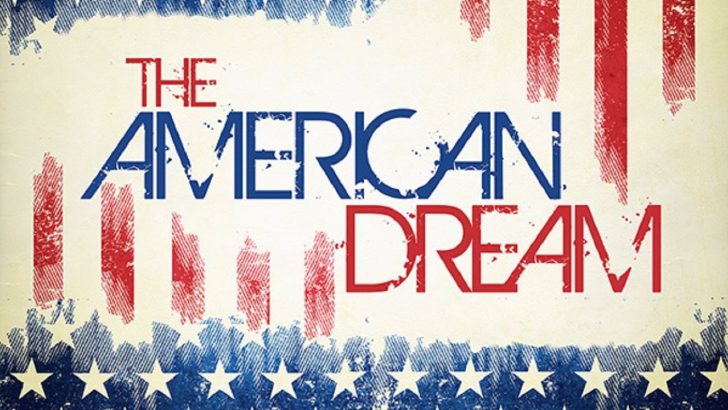Police shootings are just one burden for Black America, writes Paul Keenan
Hope. That’s what the posters promised back in 2008. Carried forward by the enthusing optimism of an African-American candidate for the presidency of the United States of America, who more than members of the black community dared to believe that hope was justified when Barack Obama at last emerged the victor of the race for the White House that year?
Eight years and two presidential terms later, hope lies sundered as a racial divide that finally ruptured in the space of a matter of days last week and under the strain of too many years of suffering.
Through modern social media technology, the full graphic nature of the killings of Alton Sterling in Louisiana on July 5 and that of Philado Castile in Minnesota on July 6 were communicated to a horrified world and resurrected once more the seemingly endless litany of police-on-black killings. The inevitable protests and national soul-searching followed throughout July 7, only to give way to the mass shooting of 11 police officers in Dallas, Texas, as they supervised one such protest.
Violence
At the time of writing, the fall-out from those most recent days of violence is yet to be fully realised, with cries of ‘black lives matter’ growing ever more shrill and demanding of remedy.
It is worth noting that what began as a hashtag on social media in the wake of the killing of 17-year-old Trayvon Martin in 2012 by a security officer, ‘Black Lives Matter’ has grown into a popular movement determined to press its message more forcibly than before. The group’s website declares that “this is a movement, not a moment”.
Presented with the raw figures of black deaths at the hands of US police officers, one can readily comprehend the impetus within a community to ‘activate’ itself, not least in the face of stony silence from the other side of the divide. According to The Guardian newspaper, which systematically collated the number of black deaths across 2015 (in the absence of any such collation by federal agencies in the States), police killed 1,134 black Americans that year.
The newspaper found from the figures that young black men (aged 15-34) are nine times more likely than other Americans to be killed by police officers.
Taken in isolation, the statistics for police killings offer a truly troubling vision of America in the years since Dr Martin Luther King dared to express his own hopes for a ‘post-racial’ nation. However, taken together with other figures of differentiation between black America and other sectors, one is presented with a truly appalling vista of a community pushed to extremes by society at large.
To seek to fully elucidate this reality is a most risky enterprise, however, as a cold reading can all too easily lead to charges of a racist-fuelled pre-judging of an entire community. More than one commentator has fallen foul of pointing clumsily to other symptoms of black American suffering, but they exist, and when pulled uncomfortably into the light, reveal an ongoing catastrophe for a people.
Just days before the Sterling and Castile shootings, black American Pastor Walter B. Hoye II, founder of the Issues4Life group dared to seize one nettle when he compared the rate of black homicides to the rates of abortion within black America. Having studied figures for the year 2013, Pastor Hoye revealed that while there were 6,217 violent black fatalities that year, there were 429,000 abortions of black infants, a rate of 69:1. That equates to 1,175 abortions each day.
Impervious to the inevitable storm of liberal fury that would greet his comparative study – akin to the rage that fell upon New York’s Assemblyman Ron Castorina Jr (a white politician) when he described that City’s horrendous black abortion rate as “genocide” – Pastor Hoye turned his sights on Planned Parenthood for profiting from the deprivation and poverty heaped on black women, and the government for funding the abortion group instead of putting the money where it is so badly needed.
Education
“Why should our government spend $1,282 for every black abortion, when that same amount of money could pay for the safe delivery or adoption of healthy children?” the angry Hoye demanded.
“If abortion is going to be legal, a half a billion dollars would be far better spent helping young black women to support a child, i.e. feed, clothe, educate, house and inspire a future American president – rather than aborting one.”
Days later, another prominent religious leader, the Catholic Church’s Cardinal Wilfred Napier of Durban, South Africa (impressive credentials to allow for comment on black issues) dared to raise his own voice, once more describing Black America’s abortion rate as “like a genocide”.
He pointed out a rate of black abortions standing at 31% of the overall population (the real figure is closer to 37%) and said: “That figure starts looking like a genocide when one factors in that black women make up only 13% of total number of women in USA.”
Coming from others – such as the well-intentioned Assemblyman Castorina Jr – the pronouncements from these religious figures run the risk of being interpreted as a blame-game on Black America rather than a highlighting of external ills they hope to expose.
A man of Cardinal Napier’s standing knows well the significance of using the term ‘genocide’; in line with the United Nation’s own accepted definition it means “acts committed with intent to destroy, in whole or in part, a national, ethnical, racial or religious group, as such… deliberately inflicting on the group conditions of life calculated to bring about its physical destruction in whole or in part [or] imposing measures intended to prevent births within the group”.
It is through this very definition that it becomes permissible to point towards the violent shootings occurring directly before the fatalities of July 5 and 6 and see them in the context of America’s enduring racial divide.
In the city of Chicago over Independence weekend, when all men were created equal, no fewer than 32 people were shot – four died – in a city that has now passed 2,000 homicides this year as it slowly succumbs to a gang culture arising from neighbourhoods, mainly black, impoverished and ignored, that are a microcosm of communities across that country existing without hope.
The racism is not in saying this, but in not saying it.


 Paul Keenan
Paul Keenan
